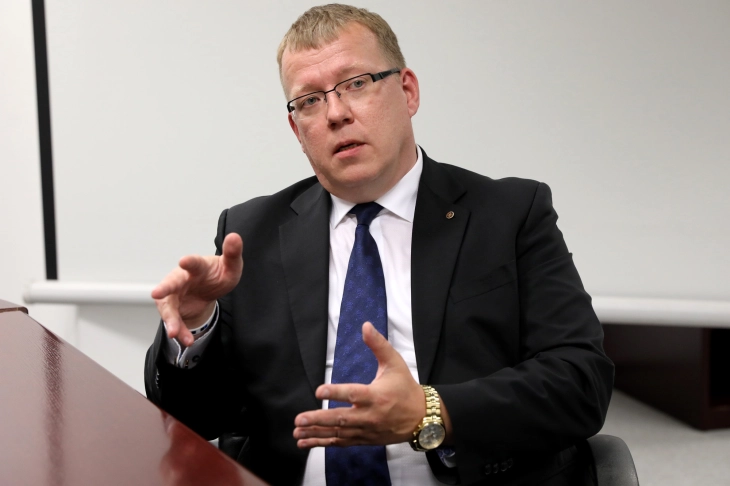Goal of Estonian digital transformation was not EU and NATO membership but improvement of public services and infrastructure, Tabur tells MIA

Skopje, 24 September 2021 (MIA) - The goal of Estonian digital transformation was never really to become a member of the EU or NATO, even though the processes are interlinked. The first public debates in late nineties on the need of better public services and better infrastructure to do proper business in Estonia led to initial understanding that the real change in service levels cannot be achieved without changing the way government provides services, says Lauri Tabur, leading expert of the Estonian Centre for International Development and former rector of the Estonian Academy of Security Sciences, in an interview with MIA.
“It is said, that to change the culture, it takes a generation (of 25 years). We did not have that time, so we had to change the process of how services are provided and to try to support the new processes with digital solutions. What happened really was, that often the new processes, supported by digitization, created new and much more efficient ways to deliver a service. And efficiency was something what we really needed to get away from the old Soviet system,” says Tabur, who is part of a visiting Estonian delegation on the launch of a project focused on enhancing digitization in North Macedonia, implemented with the financial support from Estonia and the United States.
On the experiences that North Macedonia can use regarding the digitization of society and building an information society as a significant part in the process of the country’s European integration, he says the first and most important experience would be to agree on the goal – what do we really want to achieve and what would be the most important two or three steps to reach the goal.
“Digitization is not something by itself, even though digitization is today something that almost everyone talks about. Like in the Estonian example, the goal was not to digitize, but to get away from the Soviet way of doing things. The goal brought a critical mass of public institutions to understanding that changing the way they provide services can be supported by digitization. And when processes became digitized, new services started to appear, because the new digital service environment gave limitless possibilities to develop the services further,” says Tabur.
MIA will publish the full interview on Saturday.







